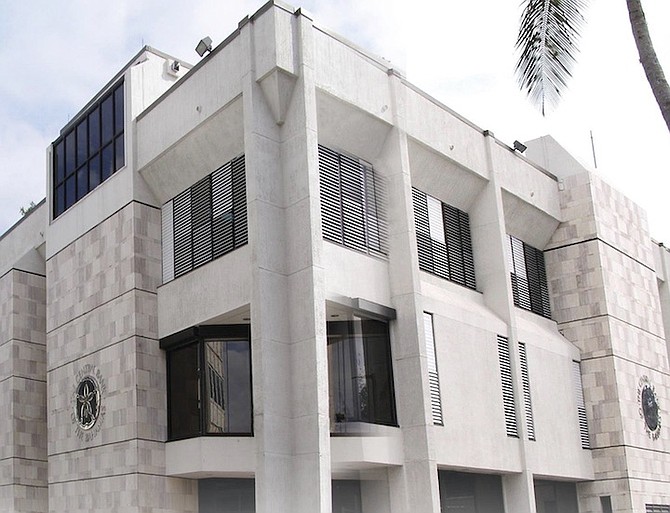By NEIL HARTNELL
Tribune Business Editor
nhartnell@tribunemedia.net
The post-COVID economic revival dropped The Bahamas’ debt-to-GDP ratio to 85 percent at end-June despite the national debt increasing by $457.5m over the prior 12 months to $11.645bn.
The Central Bank, in its just-published economic review for the three months to end-June, revealed that economic growth - chiefly the post-pandemic reflation of the Bahamian economy back to 2019 output levels - was responsible for keeping the country’s debt ratios in check rather than any end to government borrowing.
“During the second quarter, the direct charge on the Government grew by $151.1m (1.4 percent) over the previous three-month period and by $462.7m (4.3 percent) year-on-year to $11.256bn at end-June 2023. A disaggregation by component showed that Bahamian dollar debt represented 52.7 percent of the total, while foreign currency liabilities accounted for the remaining 47.3 percent,” the monetary policy regulator affirmed.
“The Government’s contingent liabilities reduced by $1m (0.3 percent) over the quarter, and by $5.2m (1.3 percent) on an annual basis, to $389.6m. As a result, the national debt, inclusive of contingent liabilities, rose by $150.2m (1.3 percent) over the three month period and by $457.5m (4.1 percent) year-over-year to $11.645bn.
“Given the recovery in the GDP estimates, the ratio of the direct charge to GDP fell by an estimated 5.3 percentage points on a yearly basis to 81.9 percent at end-June. In addition, the national debt-to-GDP decreased to an estimated 84.8 percent from 90.4 percent in the same quarter of 2022.” Thus while the ratios may be falling, the national debt in absolute terms continues to climb ahead of the Government’s hopes of achieving a budget surplus in 2024-2025.
When it came to foreign currency debt, the Central Bank report added: “During the second quarter, public sector foreign currency debt increased by $131.2m (2.3 percent) to $5.776bn, and by $173.3m (3.1 percent) vis-à-vis the same period last year. In particular, new drawings of $260.1m outpaced amortisation payments of $123.5.
“A breakdown by components showed that the Government’s outstanding liabilities, at 92.1 percent of the total, rose by $143.5m (2.8 percent) to $5.319bn on a quarterly basis. In contrast, the public corporations’ debt stock decreased by $12.3 million (2.6 percent) to $457.2m.
“Total foreign currency debt service payments reduced by $27.8m (9.9 percent) to $252.7m in comparison to the same quarter of 2022,” the Central Bank added. “The outturn was largely attributed to a $30.7m (11.7 percent) decline in the Government’s debt service payments to $231.8m, as interest charges fell by $39.6m (24.7 percent) to $120.6m, while amortisation payments rose by $8.9m (8.7 percent) to $111.2m.
“In contrast, the public corporations’ debt service payments grew by $2.9m (16.3 percent) to $20.9m, with amortisation payments increasing by $3m (31.7 percent) to $12.3m, while interest charges edged down by $0.1m (0.6 percent) to $8.5m. As a consequence of these developments, the debt service ratio decreased by 4.8 percentage points over the year to 16 percent at end-June.”
As for construction industry developments, the Central Bank said these “continued to be undergirded by a number of new and ongoing varied-scale foreign investment projects. However, domestic private sector activity remained restrained” during the three months to end-June 2023.
“On the domestic side, total mortgage disbursements for new construction and repairs - as reported by banks, insurance companies and the Bahamas Mortgage Corporation - increased by 5.6 percent ($1.1m) to $20.3m, a reversal from a 21.8 percent decline in the comparable period of the preceding year. Underlying this outturn, residential disbursements grew by 11.7 percent ($2.1m) to $20.2m, a switch from a 25.1 percent reduction in 2022,” the Central Bank said.
“In contrast, commercial disbursements reduced sharply by 96.6 percent ($1m) to $0.04m, a shift from a two-fold expansion in the year prior. Compared to the same period in 2022, total mortgage commitments for new buildings and repairs - a forward-looking indicator of domestic activity - decreased by 18 to 64, with the corresponding value reducing by 18.2 percent to $19.4m.
“Categorized by loan type, the number of undisbursed residential commitments fell by 14 to 64, with the associated value declining by $3.2m (14.1 percent) to $19.4m. Further, there were no commitments for new commercial buildings and repairs during the review quarter, compared to four commitments valued at $1.1m a year earlier. With regard to interest rates, the average financing costs for residential mortgages narrowed by 42 basis points to 6.33 percent.”





Comments
ExposedU2C 7 months, 2 weeks ago
It is truly laughable for the Central Bank to suggest that the debt to GDP ratio has gone down for the Bahamian people when there are so many of them who can no longer afford food, electricity, medicines, gasoline, etc.
The Central Bank must be talking here about the debt to GDP ratio that applies only to the corrupt political hierarchy of the PLP ruling class, their foreign investor friends and their other financial backers, cronies and partners in crime.
The Bahamian people and international debt markets long ago stopped trusting the meaningless statistics and financial information annouced by the Central Bank.
Sign in to comment
Or login with:
OpenID